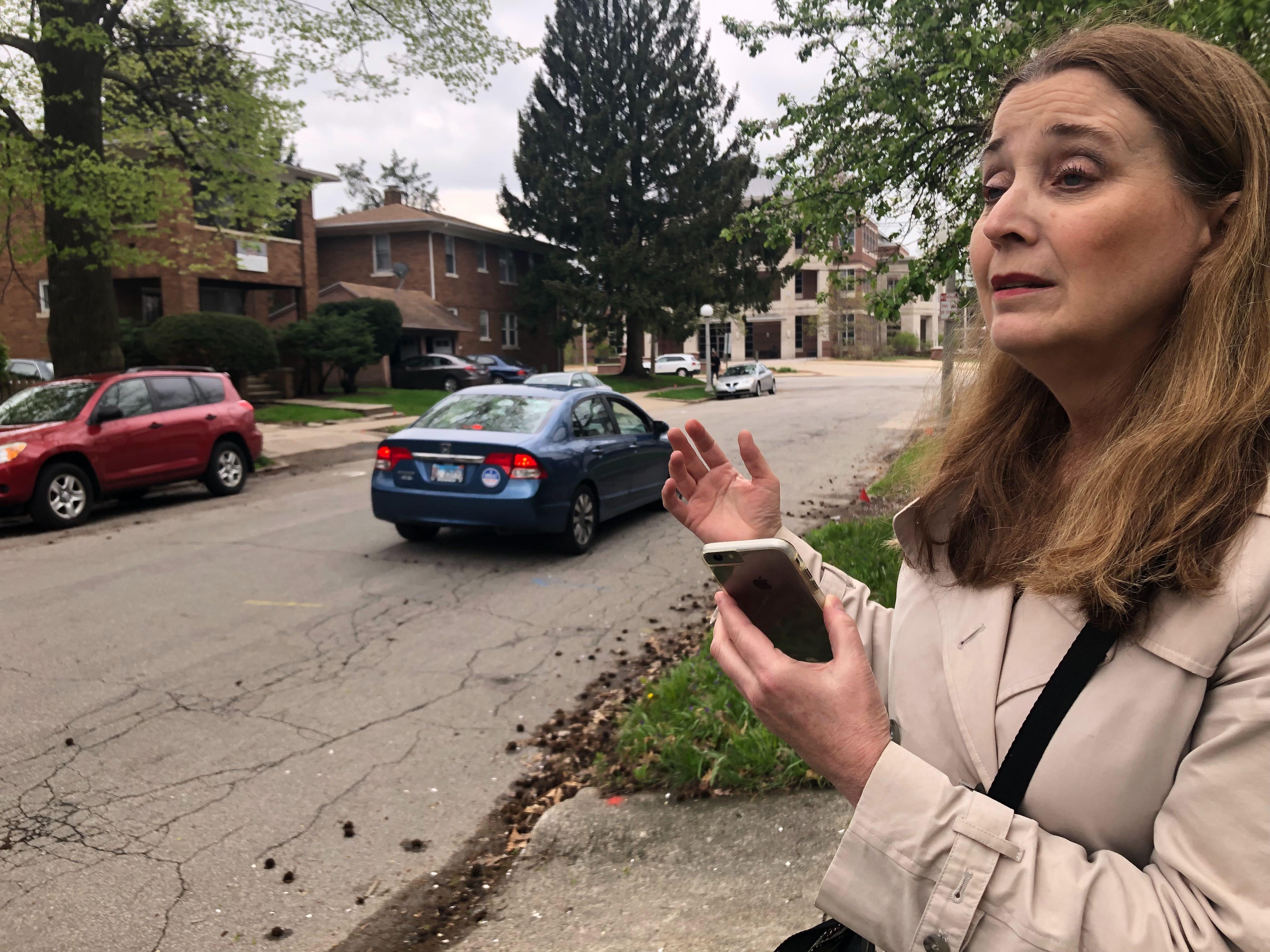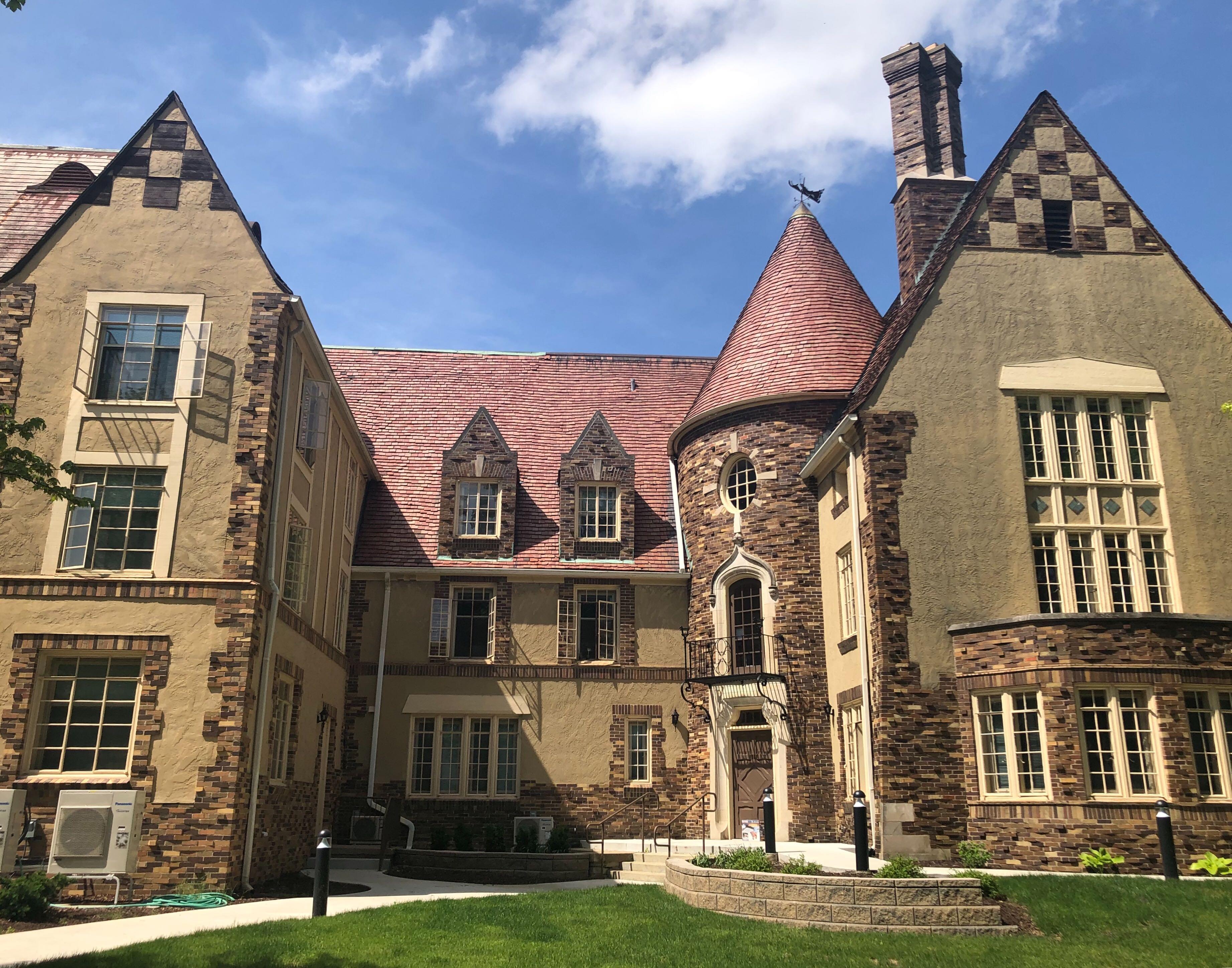Apartment Construction In Champaign-Urbana Continues To Rise, But At What Cost?
__large.jpg)
Billboards across from the new "Gather" development slated to go in at the intersection of University and Lincoln avenues. The project will include 200 apartment units. Anna Casey/Illinois Public Media
If you live in Champaign-Urbana, you may have noticed a surge in new apartment construction in recent years, but this boom is part of a larger pattern of construction happening across the country.
There were more large apartments with 50 units or more built in the U.S. in 2017 than at any point since the Census Bureau began tracking it. This was something Justin Fox, a business columnist for Bloomberg, noticed during a coast-to-coast road trip that brought him through Champaign-Urbana last fall.
He began to wonder why all the newish apartments he was seeing at stops along the way looked the same. While doing some research, he came across a term for them in the comments section of a real estate blog – “stumpies.”
“I just love that name for them, because they are,” Fox said. “They’re just sort of big, hulking, stumpy buildings that then try to look a little less stumpy with the way they’re decorated and the way they’re painted.”
Fox says the buildings are typically five stories or less, often with a retail space on the ground level. But the real similarities are underneath the surface of the structures in the less expensive materials they’re typically built with.
“This is basically as big and as tall as you can build a building out of basic wood framing,” Fox said.
A 2016 market research report from Triad Real Estate Partners found that there were a half dozen private apartment projects with more than 100 beds constructed in Champaign-Urbana that year. These new additions to the housing market, which added over 2,000 rooms, and the current projects underway, have led to a rental housing surplus, particularly among students.
A rental housing market analysis from the U.S. Department of Housing and Urban Development (HUD) found that “multifamily housing construction since 2012 has been concentrated in the student-targeted apartment market, which was built in excess.” About 60 percent of new housing construction in Champaign-Urbana since 2010 was student-targeted apartments that are closer to campus and offer amenities like equally-sized bedrooms.
Ben LeRoy, an associate planner with the city of Champaign, says it’s typically a business decision on the part of the developer whether or not to pursue a project in an oversaturated market, and not up to the city to greenlight most projects.
“We've set the rules, we've set the playing field and then it’s a financial decision and a development decision for a developer to come in and say ‘can I work within these rules.'”
Development can potentially generate more tax revenues. It’s something that the city of Urbana is counting on with five new housing developments in the planning or construction stages, according to the city’s latest budget proposal.
LeRoy also says that more housing means more competition among landlords, which could result in lower rents.
“When you look at different college communities, like Berkeley or Boulder or Austin, where their land development codes are really restrictive in terms of what can be built, the housing supply is really constrained,” LeRoy said.
But student-targeted apartments tend to be more expensive. The average rent for a one bedroom apartment in Champaign-Urbana has been increasing in recent years, going from $854 in 2013 to $903 in 2016, according to the same market research report from Triad Real Estate.

Alice Novak, chair of the Urbana Historic Preservation Comission looks at homes near the Joseph Royer Historic District on Oregon Street in Urbana.
While developers continue to build and corner the student market, residents like Alice Novak worry that older buildings could be lost.
“Nothing is too far gone as far as historic buildings in my mind,” Novak said, on a recent afternoon outside the Zeta Tau Alpha house at the corner of Vermont and Lincoln in Urbana.
The former sorority house, built in the 1920s, with ornate walls and a peaked roof, looks more like a small castle than apartments. The building sat empty for a number of years, but was recently rehabbed into multiple units.
“Rehabbing buildings like this is adding to the economy too,” Novak, who serves as chair of the Urbana Historic Preservation Commission, said. “It’s now this beautiful 19-apartment building… this kind of creativity is something that will enhance the neighborhood.”

The ZTA Sorority House at 1404 South Lincoln Ave. in Urbana was designated a local historic landmark in 2015.
She also worries that the new developments happening around town won’t have the same life as some of the older homes she has helped preserve.
“This building will be here for another one hundred years," she said outside the ZTA House, "the other ones, I don’t think so.”

